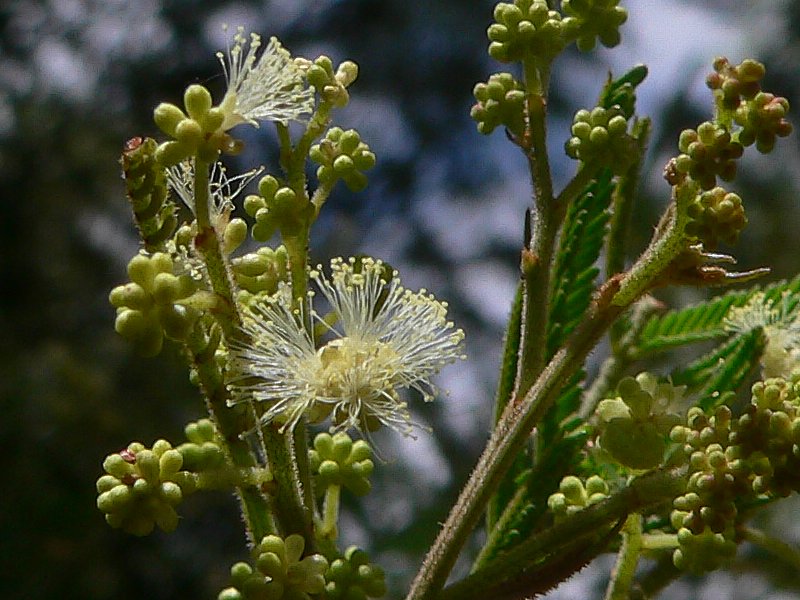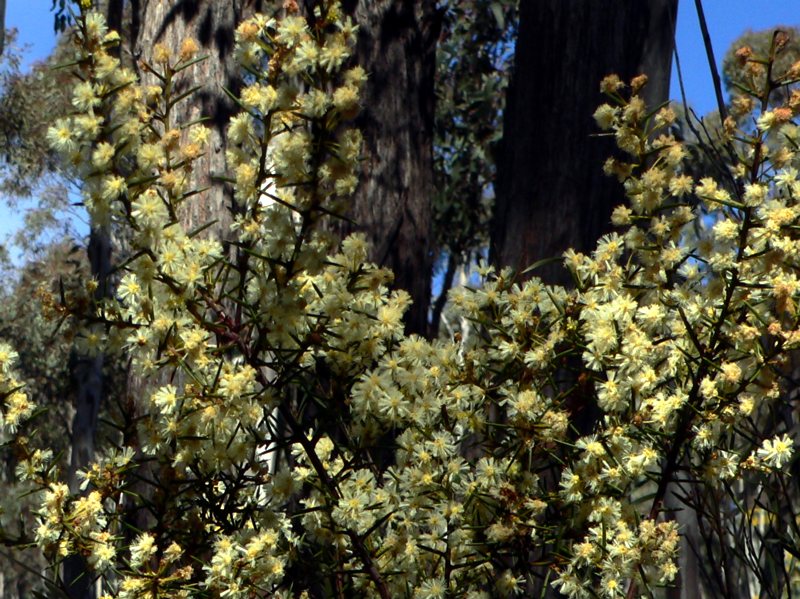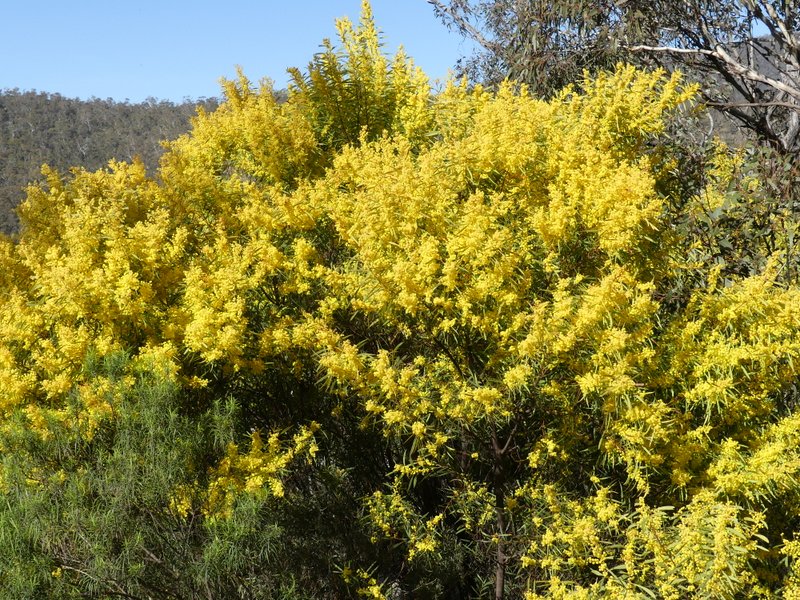
This black wattle (acacia mearnsii), still mostly in bud, shows that each flower is actually a cluster of smaller flowers. Photo: Ian Fraser.
Around Australia, every wattle has its day – and that day is 1 September every year.
It all began, perhaps unexpectedly, in Hobart in 1838, with a boating regatta to celebrate the anniversary of Abel Tasman’s sighting of Van Diemen’s Land, on 1 December 1642.
Someone on the organising committee suggested those attending wear a national emblem, which was an interesting concept since neither Tasmania nor Australia was a nation at the time.
However, the point is that the committee recommended a sprig of wattle tied with (British) navy blue. Up to 6000 people attended – probably at least a quarter of Hobart’s population at the time – although unfortunately we don’t know how many of them wore the wattle.
Thereafter, in Tasmania and the mainland, wattle-wearing was sporadically promoted throughout the next century as a statement of patriotism and independence.

The pale flowers of early wattle (acacia genistifolia) brighten Canberra hillsides from mid-winter onwards. Photo: Ian Fraser.
In 1889, the patriotic Wattle Blossom League was launched in Adelaide, followed by a Wattle Club in Victoria – associated with the Field Naturalists Club of Victoria – which organised annual outings, often by train, on 1 September to bushland areas.
From that point there was a push for an official Wattle Day. While the golden wattle (acacia pynantha, the current national floral emblem of Australia) was the variety nominated, in practice any old wattle did the job of being worn, waved, planted and pictured.
The first Wattle Day was celebrated in Adelaide, Melbourne and Sydney on 1 September, 1910. In 1913, a Federal Wattle Day League was formed. It was all about celebration and national pride (and the deflowering of thousands of wattles in the bush for decorations).
Then World War I came and the celebrations ended. However, it became customary to enclose a sprig of wattle with letters to the front, and wattle badges and bunches were sold to raise money for the war effort.
Wattle Day was resumed for a while after WWI, although the date on which it was held became more pragmatic, changing to suit peak wattle flowering in different states. Eventually it petered out, only undergoing a revival in the 1980s, culminating in the declaration of golden wattle as our national emblem in 1988.
Wattle Day is now semi-officially celebrated, and there are suggestions that 1 September might make a more unifying national day.

Redstem wattle (acacia rubida) flowers profusely in Canberra in September. Photo: Ian Fraser.
In fact, on any given day of the year there is a wattle – or rather many wattles – flowering somewhere in Australia. Even in the ACT, our 27 local species spread their blossom across much of the calendar.
And these are old Australians. They and their close relations are found throughout the southern lands.
Each of these flowers is in fact a mass of dozens or even hundreds of tiny flowers; lots of stamens but no petals, clustered into a ball or a spike. Most Australian – and ACT – wattles have foliage that resembles eucalyptus leaves, but are actually tough, leathery water-conserving flattened leaf stalks called phyllodes.
Other wattles, usually from moister areas, have true leaves – much divided feathery structures with a greater surface area for better sunlight gathering, or photosynthesis. Various ACT species display both these options.
Wattles have been used for gums, dyes, food from the seeds and fibre from the bark by Indigenous Australians for thousands of years, and more recently by European Australians.
Tannins from wattle bark for the leather trade was one of Australia’s first export industries, and for a while it was a very important one. Tens of thousands of tonnes of wattle bark was exported, especially from western Victoria. Huge areas of bush were denuded.
Blackwood (acacia melanoxylon) – which grows in the Brindabellas, but also grows from the Adelaide hills to Tasmania and tropical Queensland – is highly valued for furniture timber and can be seen throughout Old Parliament House as panelling, doors and frames, even comprising the building’s huge external front doors.
But before all of that, the first British settlers lopped the abundant supple saplings growing around Sydney Harbour and wove them into walls using stakes driven into the ground as a frame. This was an old process known as ‘wattling’, which has been in the English language for at least 1000 years. ‘Daubing’ the wall with mud to make it weatherproof completed the process.
In Australia, wattling became a noun, and the trees used became ‘wattles’.
A final comment: wattle pollen does not cause widespread hay fever. Unlike grass pollen, it is heavy and doesn’t travel on the wind; rather, it drops to the ground.
Wattle provides lots to think about. Or we can just go out and enjoy them in spring!
Ian Fraser is a Canberra naturalist, conservationist and author. He has written on all aspects of natural history, advised the ACT Government on biodiversity and published multiple guides on the region’s flora and fauna.
Original Article published by Ian Fraser on The RiotACT.

